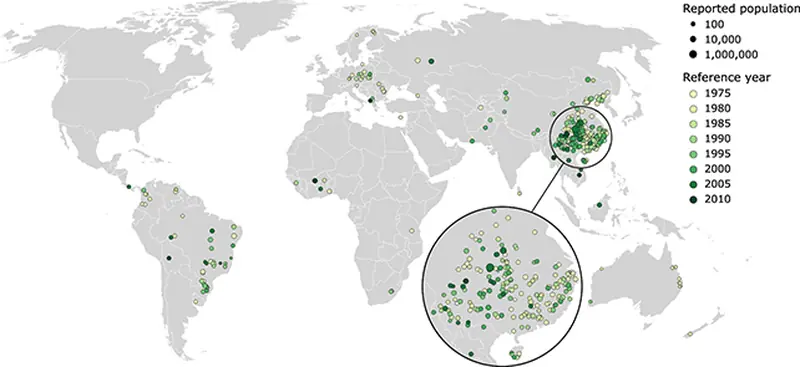
In March 2025, the global population reached 8.21 billion people. However, Finnish scientists claim that our “blue planet” is actually much more densely populated than we previously thought.
A new study has revealed that statistics significantly underestimate the population in rural areas. Researchers attribute this to the so-called grid method, which is commonly used for counting people. The idea behind this method is straightforward: divide the territory into squares and estimate the population in each square based on census data.
However, according to the scientists, since these estimates were primarily calibrated in urban settings, inaccuracies in rural population counts have gone unnoticed.
What Did the Scientists Report?
Rural areas are home to 43 percent of the world’s population. If the researchers’ calculations are correct, the number of people not accounted for in the statistics could potentially reach billions.
“We are the first to provide evidence that a significant portion of rural residents may be missing from global population datasets. We were surprised to find that the actual number of people living in rural areas is much higher than what global data suggests. Depending on the dataset, the rural population is underestimated by 53 to 84 percent,” emphasized Dr. Yozias Lang-Ritter, a co-author of the study.
The team analyzed population data from 1975 to 2010, examining the impact of dam construction on population displacement. This is a scenario for which there are usually verifiable data available on-site, as reported by Science Alert.

By analyzing statistical information on 307 dam construction projects across 35 countries, the researchers compared the official number of displaced persons in these areas with the estimated number of people likely residing there, according to five different major population datasets.
The researchers argue that the significant discrepancy between population estimates and the actual number of people displaced in a given area ultimately stems from the lack of detailed data in rural regions. This includes information related to census data, healthcare, and infrastructure.
“The results are striking, as these datasets have been used in thousands of studies and widely relied upon for decision-making, yet their accuracy has not been systematically assessed,” said Dr. Lang-Ritter.
However, not all scientists share the views of their Finnish colleagues. Some researchers who did not participate in the study argue that improvements in satellite imagery and data collection reduce these discrepancies.
Even if the counting error is not as significant as suggested, it could still involve discrepancies affecting hundreds of millions of people.
Population estimates are crucial in many aspects of life, from providing public services to assessing the impacts of climate change. Therefore, the team behind the new study believes it is essential to better track the population in rural areas. After all, we cannot allow people to remain overlooked, potentially lacking access to vital resources.
The findings of the study were published in the journal Nature Communications.
